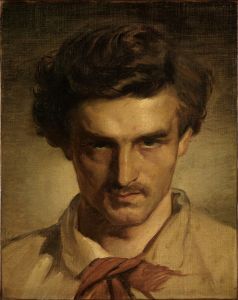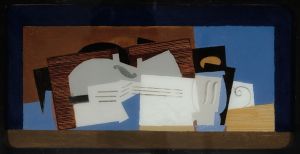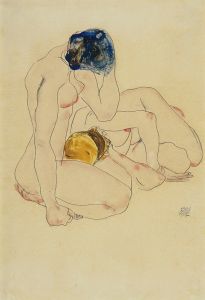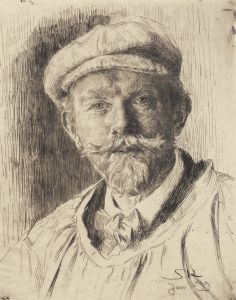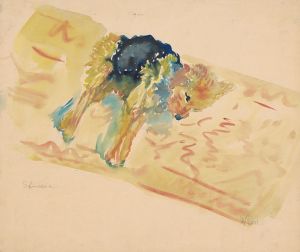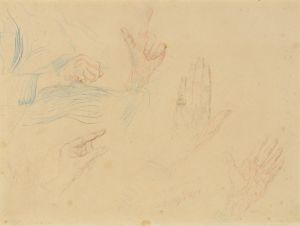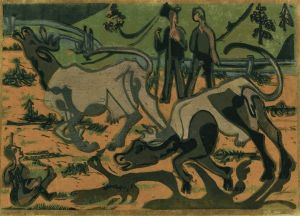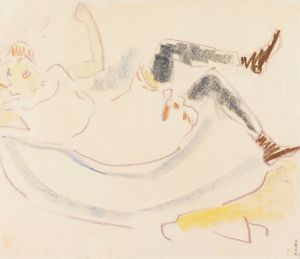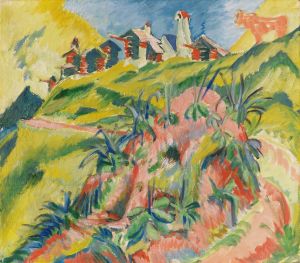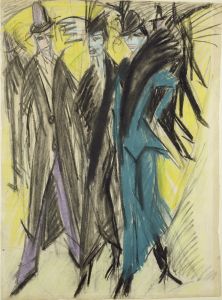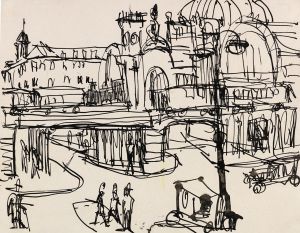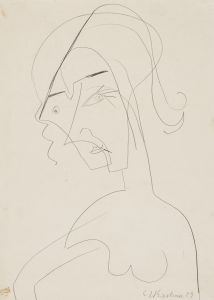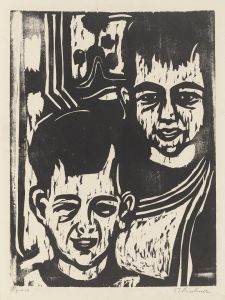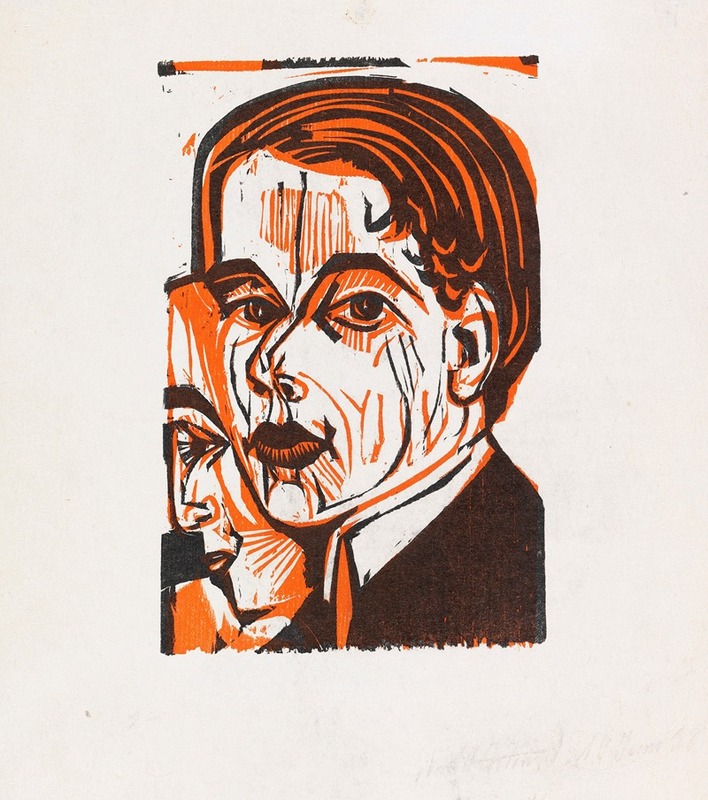
Selbstbildnis mit Frauenprofil
A hand-painted replica of Ernst Ludwig Kirchner’s masterpiece Selbstbildnis mit Frauenprofil, meticulously crafted by professional artists to capture the true essence of the original. Each piece is created with museum-quality canvas and rare mineral pigments, carefully painted by experienced artists with delicate brushstrokes and rich, layered colors to perfectly recreate the texture of the original artwork. Unlike machine-printed reproductions, this hand-painted version brings the painting to life, infused with the artist’s emotions and skill in every stroke. Whether for personal collection or home decoration, it instantly elevates the artistic atmosphere of any space.
Ernst Ludwig Kirchner's Selbstbildnis mit Frauenprofil (Self-Portrait with a Woman's Profile) is a painting created by the German Expressionist artist, who was a founding member of the influential art movement Die Brücke (The Bridge). This movement, established in 1905, sought to break away from traditional academic art and embraced a raw, emotive style that emphasized bold colors, dynamic compositions, and a focus on the human condition.
The painting, executed in 1914, is a striking example of Kirchner's self-portraiture, a recurring theme in his work that often reflected his psychological state and artistic identity. In Selbstbildnis mit Frauenprofil, Kirchner portrays himself alongside the profile of a woman, a motif that may suggest a complex interplay between his own identity and his relationships with women. The composition is characterized by sharp, angular lines and a vivid, expressive use of color, hallmarks of Kirchner's style during this period.
This work was created during a tumultuous time in Kirchner's life. In 1914, Europe was on the brink of World War I, and Kirchner himself was grappling with personal and professional challenges. The painting reflects the tension and anxiety of the era, as well as Kirchner's own inner struggles. His self-portraits often served as a means of introspection, and this piece is no exception, offering a glimpse into the artist's psyche.
The woman depicted in profile remains unidentified, but her presence adds a layer of mystery and emotional depth to the painting. Kirchner's relationships with women, both personal and as artistic muses, were a significant aspect of his life and work. The juxtaposition of his own image with that of the woman creates a dialogue within the composition, inviting viewers to interpret their connection.
Selbstbildnis mit Frauenprofil is also notable for its stylistic elements, which reflect the influence of non-Western art, particularly African and Oceanic art, on Kirchner and his contemporaries in Die Brücke. This influence is evident in the simplified forms and exaggerated features, which convey a sense of raw emotional power.
Today, Selbstbildnis mit Frauenprofil is recognized as an important work within Kirchner's oeuvre and the broader context of German Expressionism. It exemplifies the movement's emphasis on emotional intensity and the exploration of the human experience through innovative artistic techniques. The painting is held in a private collection and has been exhibited in various retrospectives of Kirchner's work, allowing audiences to appreciate its historical and artistic significance.





